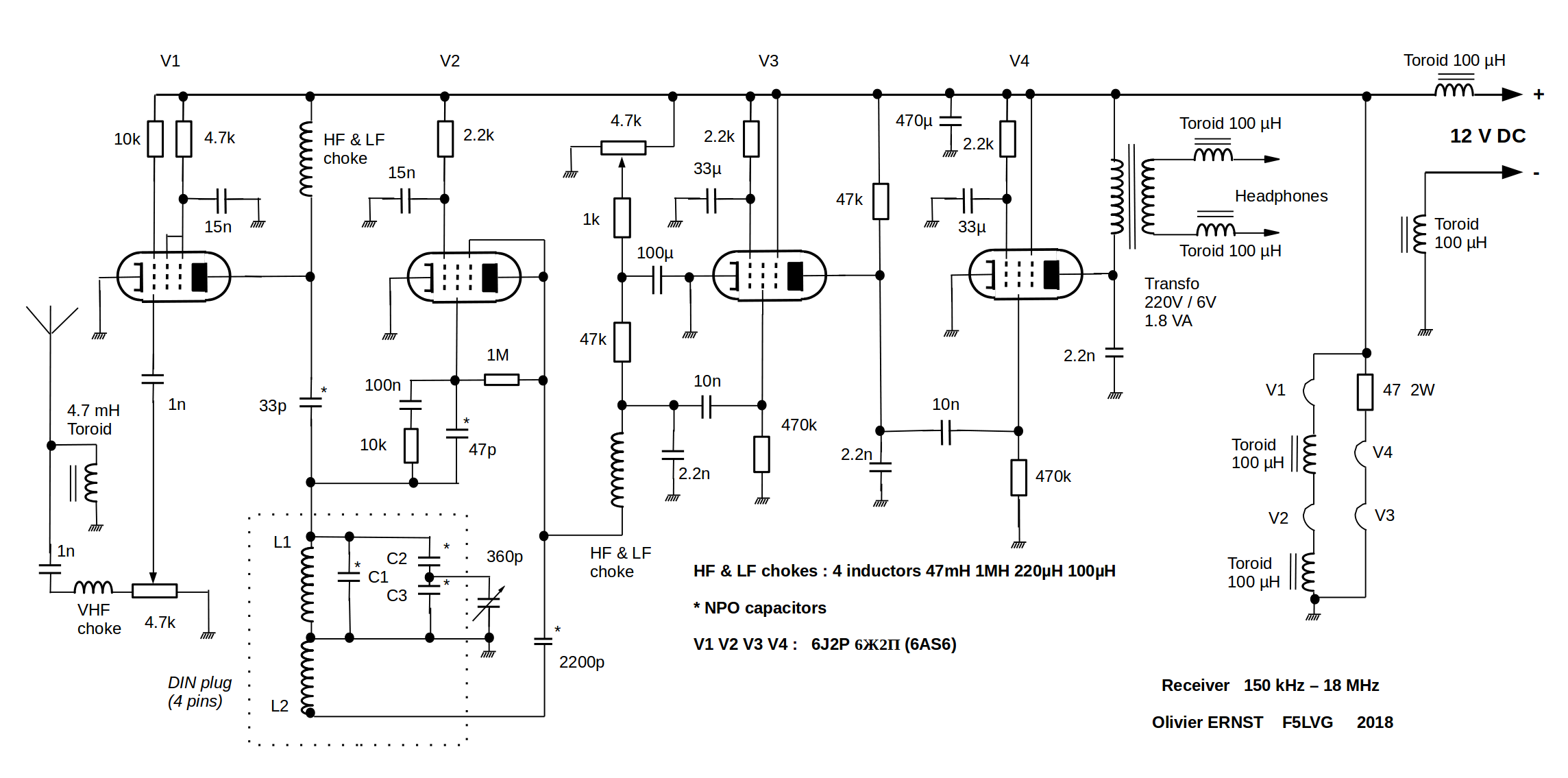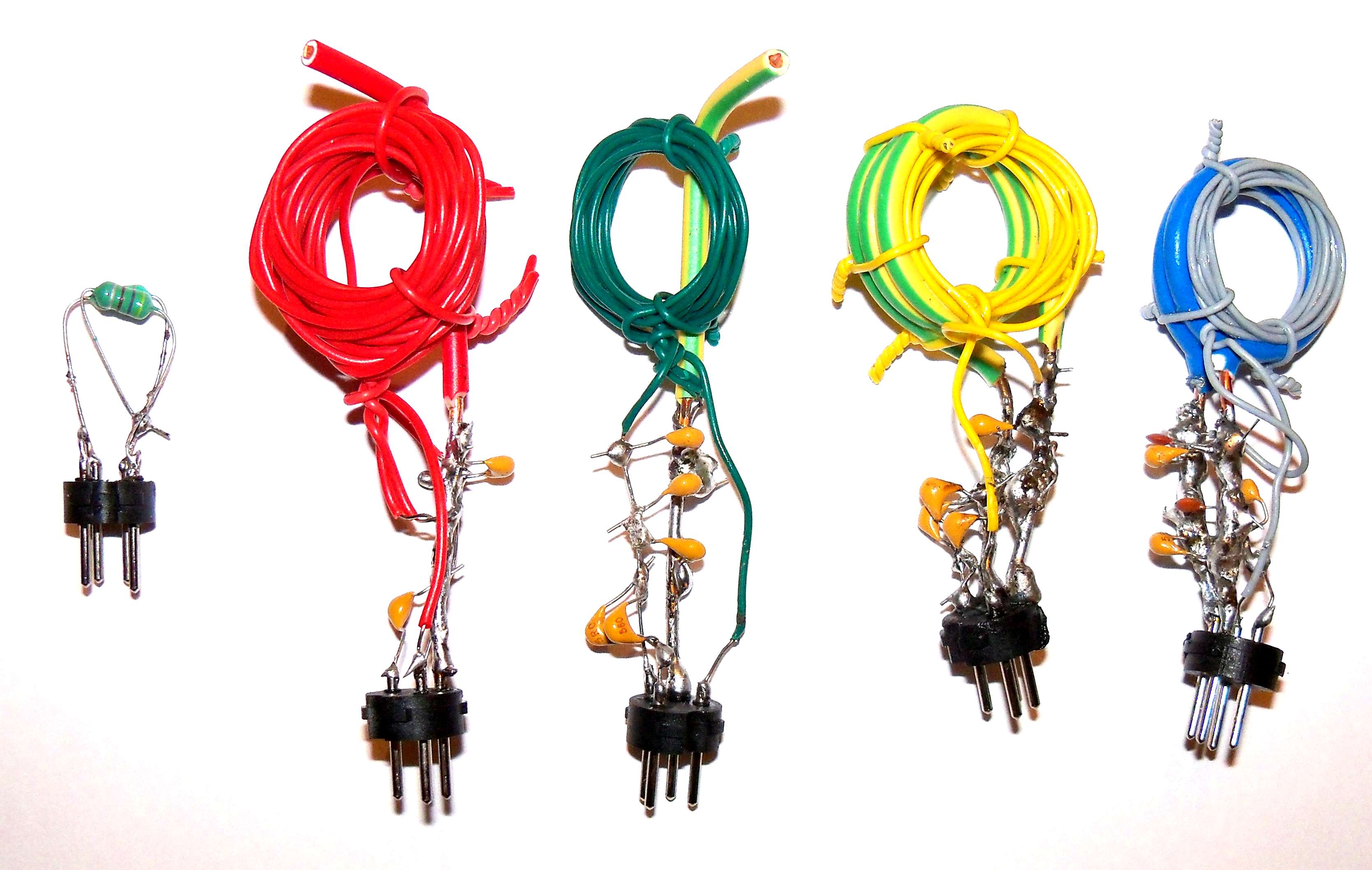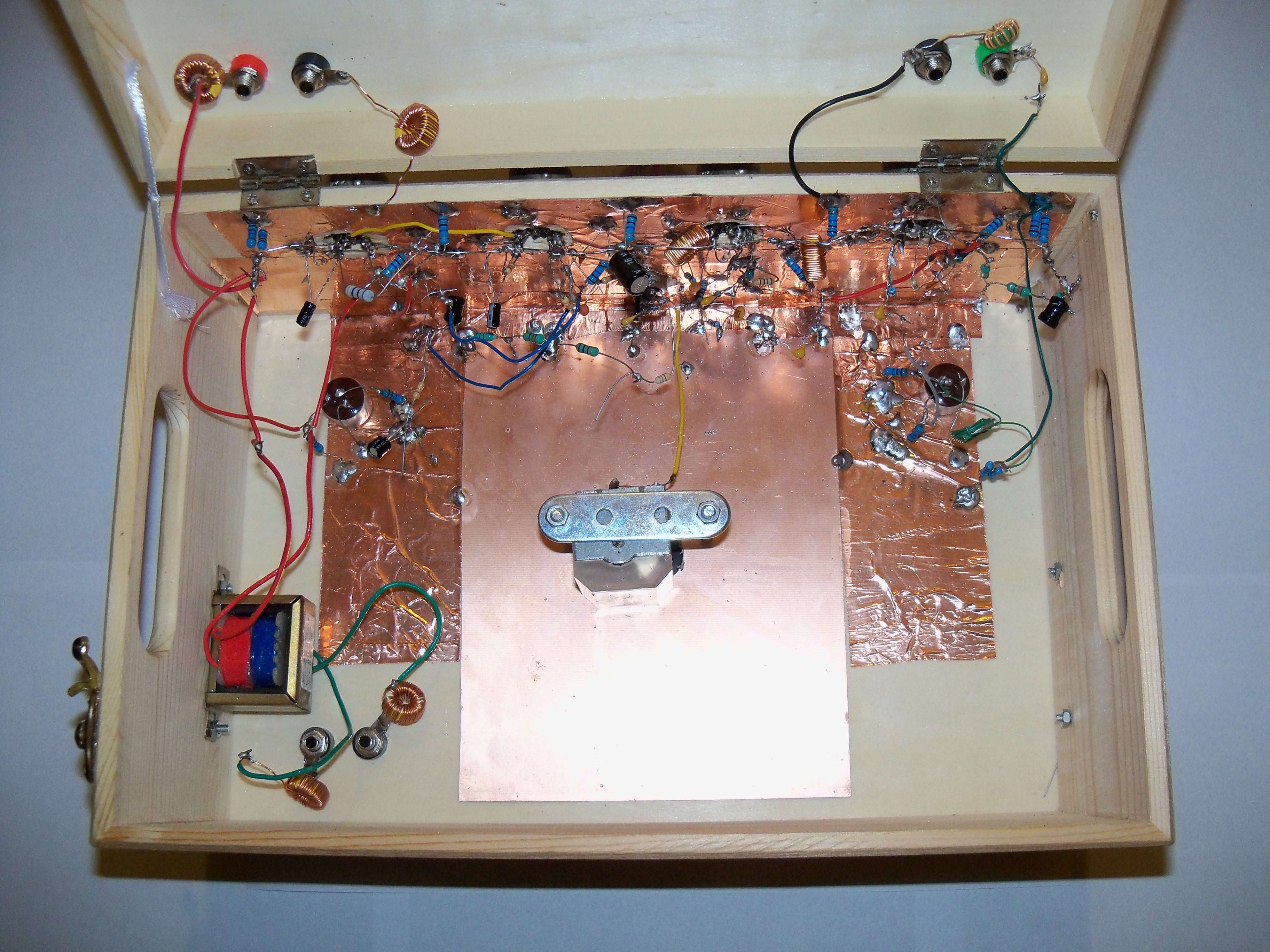
A new 4 tubes low voltage regenerative receiver
This receiver requires only a 12V 320mA power supply. It receives waves from 150kHz to 18MHz, in SSB AM or CW. The use of electronic tubes with this voltage is unusual, which requires an adaptation of their use.

Because it is the simplest technique to receive SSB, AM and CW.
Why short waves and long waves?
Because I am radio amateur and sometimes I like to listen to the news.
Why tubes?
Because I like their glow.
Why 12V only?
Because I wanted to use a standard power supply or a battery.
Why the 6J2P (6Ж2Π 6AS6) tubes?
Because their heaters consume only 175mA, they have 2 control grids (G1 & G3) and they are really cheap.
Why is there a positive voltage on G1?
Because, at 12V of anodic tension, the cut-off of 6J2P tubes is above 0V. If the command grid is G1, the input impedance is low because of the grid current. This is well suited for the untuned RF stage. If the command grid is G2, the input impedance is high. This is well suited for the detector and the AF amplifiers.
Why is the tuning circuit on a DIN plug?
For the simplicity of the system associated with low losses.
Why does it have a low L/C ratio?
To obtain a good frequency stability and a good selectivity.
Why 100μH toroids?
To avoid hand effect and common hum.
Why the 100k resistor and the 100n capacitor in the grid circuit of the detector (V2)?
To minimize the induction of the mains current at the input of the audio channel.
Why is a 47 ohm resistor in series with the V3 and V4 heaters?
Because, at 12V of anodic tension, the AF amplification is higher when the heaters are a little under powered.
Tuning circuit
LW: L1 3.3mH (miniature) / L2 4.7mH (miniature) / C1 0pF / C2 short cut / C3 0pF
80m: L1 10 turns / L2 20 turns / C1 680pF / C2 330pF / C3 0pF
40m: L1 5 turns / L2 12 turns / C1 526pF / C2 68pF / C3 0pF
20m: L1 3 turns / L2 7 turns / C1 334pF / C2 1470pF / C3 220pF
17m: L1 2 turns / L2 6 turns / C1 360pF / C2 100pF / C3 330pF
SW Coil diameter: 22mm
There is no adjustable capacitor. Each value is obtained empirically by assembling several capacitors to obtain the desired frequency and sufficient spreading.
Olivier
ERNST, F5LVG October 2018


